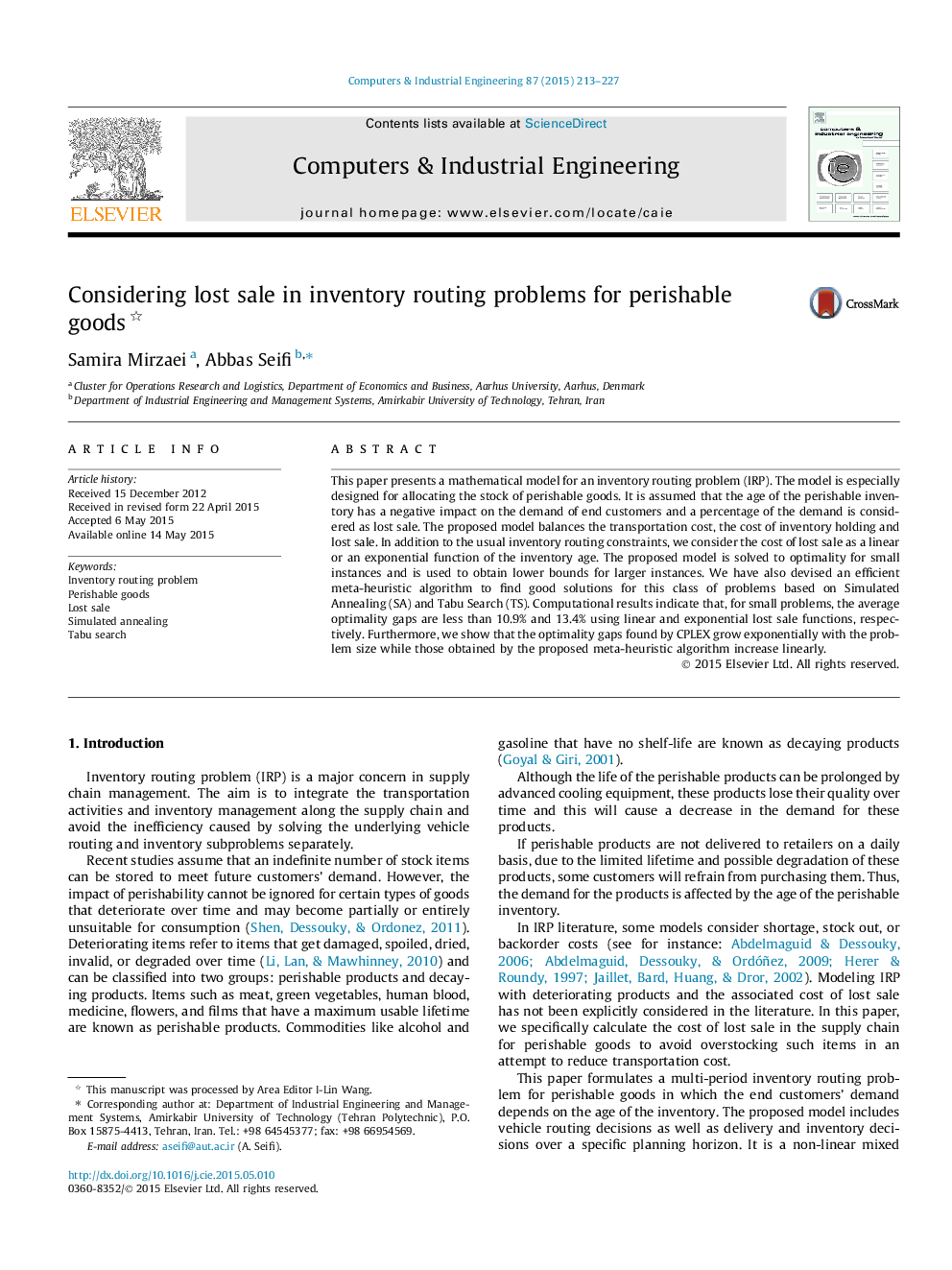| Article ID | Journal | Published Year | Pages | File Type |
|---|---|---|---|---|
| 1133557 | Computers & Industrial Engineering | 2015 | 15 Pages |
•We present a mathematical model of inventory routing problem for perishable goods.•The lost sale cost is integrated in the inventory routing problem.•The demand for perishable goods is assumed to be a function of the inventory age.•The model is linearized in order to make it solvable using CPLEX.•A hybrid meta-heuristic algorithm based on SA–TS is devised to solve larger instances.
This paper presents a mathematical model for an inventory routing problem (IRP). The model is especially designed for allocating the stock of perishable goods. It is assumed that the age of the perishable inventory has a negative impact on the demand of end customers and a percentage of the demand is considered as lost sale. The proposed model balances the transportation cost, the cost of inventory holding and lost sale. In addition to the usual inventory routing constraints, we consider the cost of lost sale as a linear or an exponential function of the inventory age. The proposed model is solved to optimality for small instances and is used to obtain lower bounds for larger instances. We have also devised an efficient meta-heuristic algorithm to find good solutions for this class of problems based on Simulated Annealing (SA) and Tabu Search (TS). Computational results indicate that, for small problems, the average optimality gaps are less than 10.9% and 13.4% using linear and exponential lost sale functions, respectively. Furthermore, we show that the optimality gaps found by CPLEX grow exponentially with the problem size while those obtained by the proposed meta-heuristic algorithm increase linearly.
